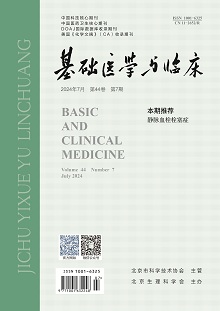Photodynamic therapy under endoscope on patients with early and earlier esophageal carcinomas
2013, 33(9):
1176-1179.
 Asbtract
(
200 )
Asbtract
(
200 )
 PDF (1195KB)
(
490
)
Related Articles |
Metrics
PDF (1195KB)
(
490
)
Related Articles |
Metrics
Objective To evaluate effectiveness of photodynamic therapy(PDT) under endoscope in 10 patients with esophageal carcinomas, investigate the preventions of its side-effectiveness. Methods 10 cases with esophageal carcinoma were included in this study, which accepted PDT during June, 2011 and June, 2013. Forty-four to forty-eight hours after intravenous injection of photosensitizer (photosan) (2mg/kg), semiconductor laser irradiation was performed by gastric endoscope to local tumor tissues. Treated for two consecutive days as a cycle, and repeated another cycle one month later. 1,3,6,12,18,and 24 months later after PDT, gastroscope, chest and abdominal enhanced CT-scan were taken to evaluate the effectiveness and side-effectiveness of PDT, and the managements of these adverse effects were investigated. Results Tumor tissues occurred edema and necrosis on the following day after PDT, part or all of which disappeared one month later. One month later after the second cycle of PDT, tumor tissues in all of the 10 cases disappeared under gastric endoscope, and tumor cell invisible under microscope. From a follow-up of 2-24 months in the 10 cases, no recurrence or metastasis was observed under gastric endoscope, chest and abdominal enhanced CT-scan and serum tumor markers. Except for photosensitivity reactions, the main adverse effects of PDT were transient fever, chest pain, cough and expectoration, pulmonary infection and dysphagia, all of which remissed through symptomatic treatments. 2 cases presented esophageal stenosis, and then remitted through endoscopic dilation and stent placement. Hypercoagulable state in vary degrees were observed in all of these 10 cases, more over, one of them got acute coronary syndrome. Conclusions For early staged esophageal carcinoma, the effectiveness of PDT was definite. The adverse effects of PDT were relatively moderate and could be remitted through symptomatic treatments. The reason and mechanism of abnormal coagulation function still need further investigation.


